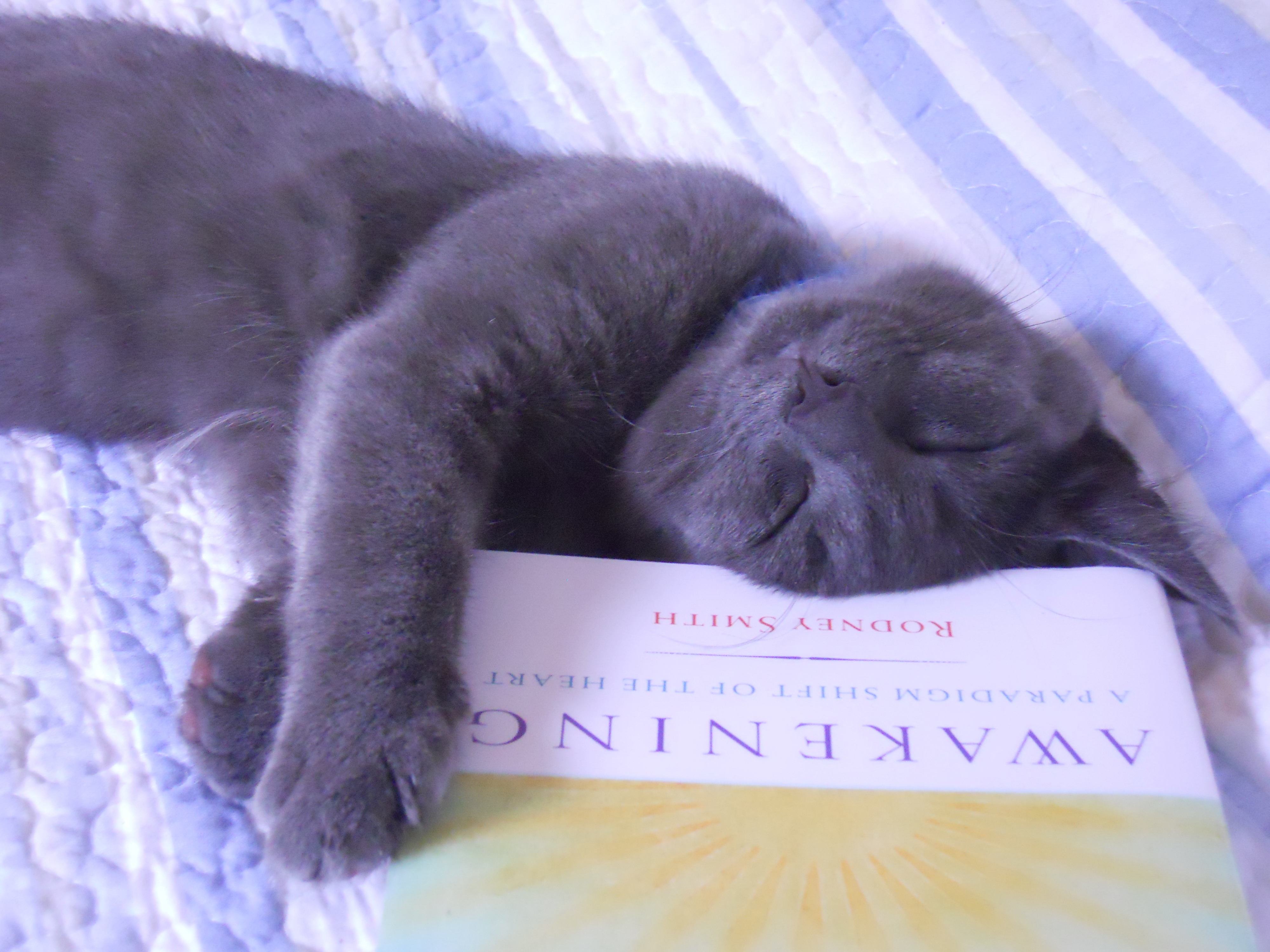Did you ever have trouble falling asleep at night? Who doesn’t, at some time or other. It’s awful. And there can be so many causes, from physical or emotional pain, to having to pee, to disruption of life or sleep patterns, overindulging in technology, to having too many thoughts racing through your mind. Sometimes, you just can’t let yourself sleep.
Falling asleep is like a trust exercise. You let yourself go, relax, and let down your conscious guard. And if you feel anxious, for example, you are reluctant to do that. You fear what might occur. When you’re afraid, your body is gearing up for fight-flight-freeze. Your thinking is pushed to consider all the different ways an attack might happen, and your mind races. So preparing for a good night’s sleep happens also during the day, way before your head nudges the pillow.
When you respond to your own emotions with “I don’t want to feel this,” or “only weak people would feel this way,” you fight yourself. These thoughts are the way fight-flight appears in your body and mind. So whether it’s at night or during the day, when your thoughts race with negative self-judgments or fearful images of the future, treat the situation as an opportunity to learn what your mind is telling you and how your mind works. Study yourself and take note of your feelings, thoughts, and emotions. Treat your mind as if you were a loving parent to your mental state.
When you are aware of thoughts and feelings it gives you the power to change. Try different strategies, experiment. A fearful image might be telling you that a dangerous moment awaits you. Or it can be telling you that you are carrying unreasonable fear and it’s time to let it go.
By studying yourself, you shift your mind from fight-flight to neutral analysis or open welcoming. During the day, you could respond to a racing mind with mindfulness meditation, a walk in the woods, a massage, political action, or exercise in the gym. You can notice your own breath, how rapid, shallow, or deep it is. As the mind goes, so goes the breath. Even when you think you have no time, or maybe especially then, remember to take a moment now and then to close your eyes and calmly focus on one breath, then another.
At night, once in bed, focus on breathing calmly to provide a transition to sleep and letting go of images from your day. Close your eyes and picture yourself calmly asleep. You could also try one of a number of practices, like progressive relaxation, or taking a mental journey. In progressive relaxation, you could start at your feet and work your way gradually up to your face, or vice versa. If you start with your face, imagine breathing into your cheeks or the area around your eyes. Feel the area expand as you breathe in, and let go, relax, settle down as you breathe out. Then move to the area around your mouth. Then the jaw, shoulders, etc.
To take an imaginative walk or visualized journey, after you close your eyes, take three calm, slow breaths. Then allow an image of a path in the woods to come to mind, a tree, a beach, or a waterfall. The important consideration is that it’s a place you love, or welcome, and find relaxing or uplifting. As you walk in your mind, study the details, the flowers, the stones, shells on the beach or the bark of a tree. End by allowing yourself to sit and relax and just take it all in.
You could combine the two. If you like beaches, after closing your eyes and focusing on the breath, imagine yourself on the beach, lying down on your back. The temperature is warm but not too hot. As you breathe into your shoulders, feel your body expand as you inhale, and settle down, relax and feel warm as you exhale. You feel the sand mold to your body, accept, protect, and cuddle you.
Remember to commit to your own comfort and sleep. When you get in bed, turn off your phone or other device. When thoughts come to you, instead of recording them on your phone or indulging them in your mind, imagine they are like drops of water falling in a waterfall, and notice them as they disappear.
Your body and mind operates rhythmically, in different cycles, just like the natural environment around you. There is the circadian (around the day) rhythm, the 24 hour sleep-awake cycle. And there is the ultradian (within or beyond the day) rhythm, a 90-120 minute cycle controlling things like dreams and which hemisphere of the brain is dominant. If you go to sleep at a relatively set time, it is easier to stay in tune with your cycles and fall asleep. If you wake up during the night, try to return to sleep as soon as comfortable to do so. If you have difficulty, use the above practices.
Progressive relaxation and taking a mental journey allows your mind to get close to dreaming and relax. It helps you notice that you can trust at least some aspects of the world. It is especially important, when the headlines are filled with threat and danger, that you find the ability to love and trust elements of your life and world.


